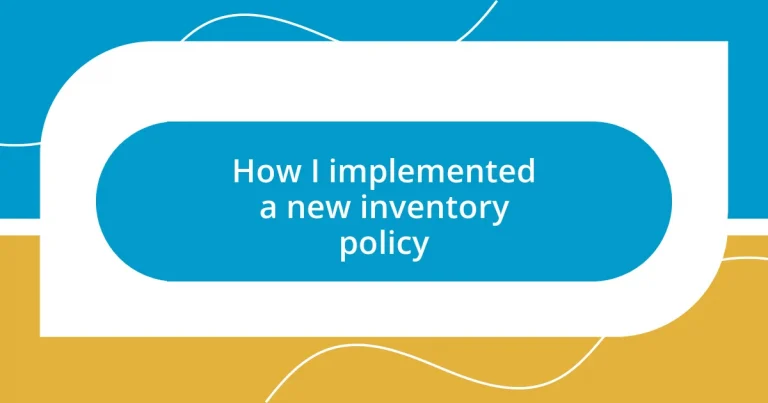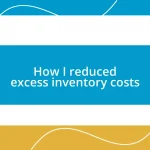Key takeaways:
- Understanding demand forecasting and inventory turnover is crucial for optimizing stock levels and enhancing customer satisfaction.
- Setting clear, measurable inventory management goals fosters accountability and energizes the team to improve performance.
- An effective implementation of inventory policies requires thorough training, ongoing support, and regular communication to encourage team engagement and adaptability.
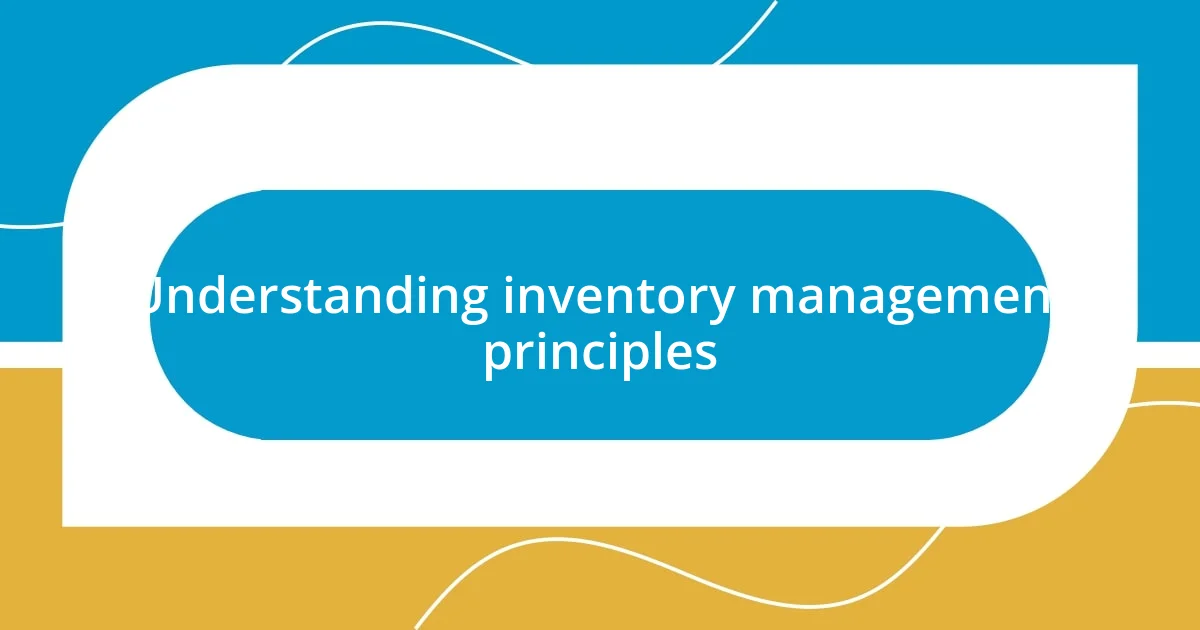
Understanding inventory management principles
Inventory management principles revolve around the efficient tracking and handling of stock to minimize costs and maximize customer satisfaction. I remember when I first grasped the importance of maintaining accurate inventory levels; it transformed my approach completely. Have you ever found yourself in a situation where a product was out of stock, and the customer left disappointed? That’s a moment I wanted to avoid at all costs.
Understanding demand forecasting is pivotal. It’s not just about counting the products on the shelf; it’s about predicting what will fly off the shelves and what will sit idle. I recall analyzing sales data and realizing we had overestimated demand for a particular seasonal item, leading to overstock and wasted resources. It made me question: how can we better align our inventory with actual customer needs?
Lastly, embracing the concept of inventory turnover can lead to healthier profit margins. I learned this firsthand when my team and I focused on moving slower-selling items through clearance sales. It was enlightening to see how much space and capital could be freed up for new arrivals. Have you explored how optimizing turnover rates could impact your operations? I can’t stress enough how rewarding that strategy has been in terms of both customer satisfaction and financial health.
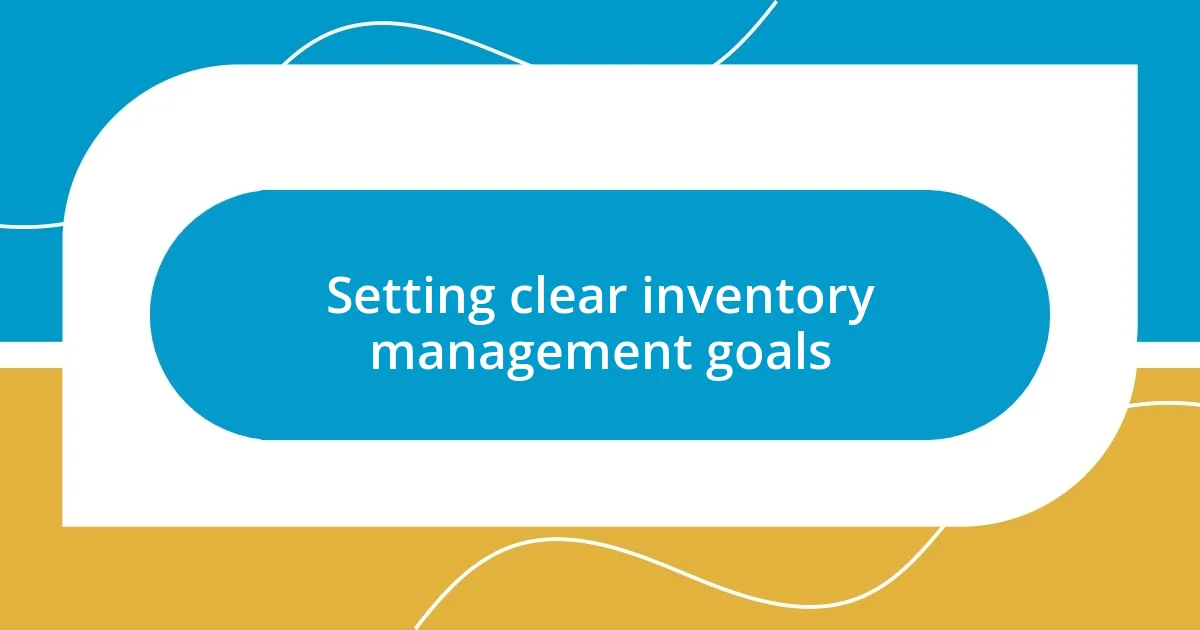
Setting clear inventory management goals
Setting clear inventory management goals is essential for achieving a smooth operation. Early in my journey, I discovered that without specific, measurable goals, it was all too easy to drift off course. For instance, when we aimed to reduce excess inventory by 30%, it gave the entire team a clear target to rally around. This clarity transformed our daily actions and decision-making processes.
Here are some key goals I found beneficial to set:
- Reduce stockouts by a certain percentage: This was a game-changer in maintaining customer satisfaction.
- Improve inventory turnover rates: Establishing a target encouraged us to continually move products efficiently.
- Reduce carrying costs: Identifying a reduction goal helped in making more strategic purchasing decisions.
- Enhance order accuracy: Setting a specific accuracy rate pushed our team to focus on precision in stock management.
Each of these goals not only provided direction but also instilled a sense of accountability in the team. When everyone knows the destination, it’s easier to stay on the right path. Plus, achieving these milestones fosters a collective sense of pride and accomplishment. I can’t emphasize enough how the right goals can energize your team and improve overall performance.
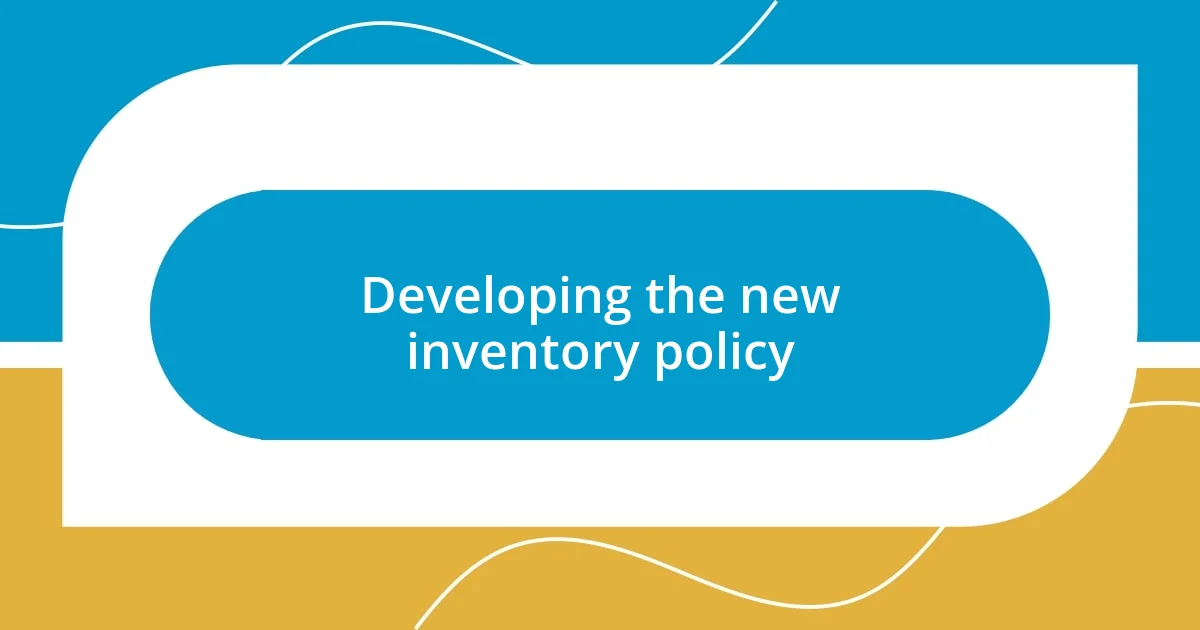
Developing the new inventory policy
Developing a new inventory policy took time and serious reflection. I recall sitting down with my team, whiteboard markers in hand, brainstorming the core principles we wanted to embody in this policy. It wasn’t just about numbers; we wanted a system that would enhance team collaboration and improve our responsiveness to market trends. I asked my team, “What are the real pain points we face every day?” Their insights formed the backbone of the new approach, highlighting areas we had overlooked before.
In crafting the policy, I emphasized the importance of flexibility. Initially, I thought sticking strictly to rigid guidelines would be the way to go. Yet, I realized that allowing room for adaptation was key, particularly in a fluctuating market. For instance, we designed protocols that could be easily adjusted based on real-time sales data. During our discussions, I shared an experience where rigid policies once hindered a rapid response to a sudden spike in a customer favorite. This adaptability ultimately fostered a culture of innovation and quick thinking within our team.
To visualize the distinctions we’re addressing, I created a simple comparison of our former versus new approach.
| Former Policy Approach | New Policy Approach |
|---|---|
| Rigid guidelines with little room for flexibility | Dynamic processes that adjust to real-time data |
| Limited team input on inventory decisions | Collaborative building of policies with team insights |
| Focus on past sales data only | Integration of forecasting and market trends |
These changes were instrumental in our transition. I can genuinely say this new policy fostered both team morale and operational efficiency. Seeing the direct impact of our collective effort truly motivated everyone involved. Remember, the best policies often stem from open communication and an understanding of the team’s unique challenges.”
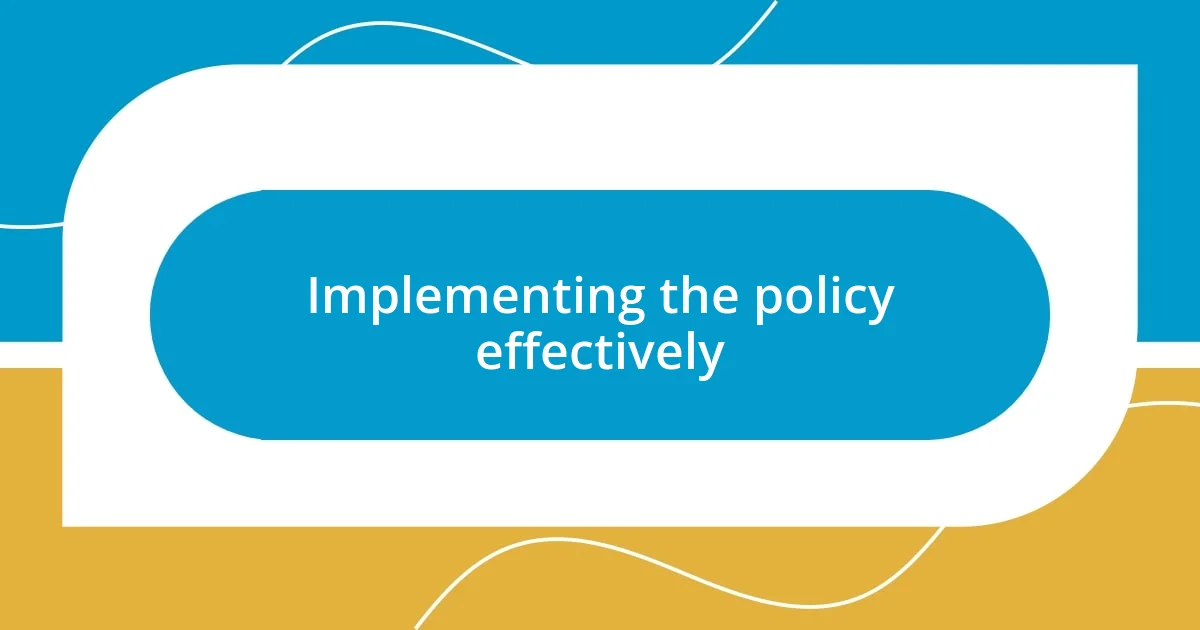
Implementing the policy effectively
Implementing the inventory policy effectively hinged on thorough training and clear communication. I vividly remember the first training session we held; there was a mix of excitement and apprehension in the room. “What if we stumble through this?” one team member asked. I reassured them, emphasizing that this was a journey we were all embarking on together. When each team member felt comfortable with their role and the new procedures, I could see the confidence grow. It was amazing to witness how asking questions and encouraging participation turned anxious faces into eager learners.
Furthermore, I found it crucial to establish regular check-in meetings. Initially, I thought one launch would suffice, but we soon discovered that ongoing support was essential. I kept hearing phrases like, “I didn’t realize how much these new measures could simplify my tasks!” during our meetings. These reflections highlighted the importance of adjusting our approach based on the team’s feedback. It created an environment where everyone felt valued and empowered to voice concerns or share insights. Staying receptive to their thoughts not only made the policy more effective, but it also strengthened our team culture.
Finally, I implemented visual performance indicators to track our progress. I recall the first time I updated the team on our inventory turnover rate; their excitement was palpable. “Look at how far we’ve come!” someone exclaimed. Those moments of celebration transformed what could have been just another change into a shared victory. Monitoring our successes and struggles made the process not just about policy compliance, but a collective effort. This level of engagement is what I believe made the implementation not only effective but also enjoyable for everyone involved.












